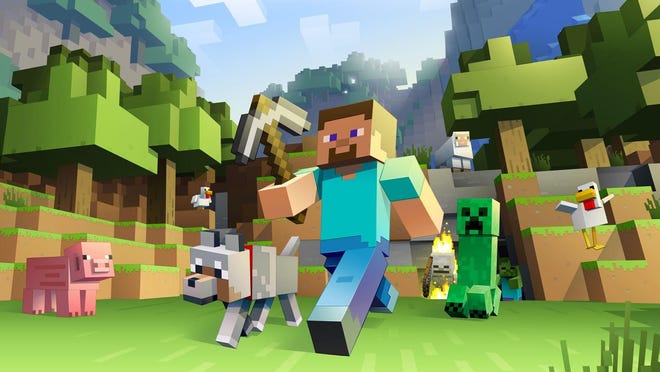Minecraft Speedrunning: What is it and How do I do it?
Minecraft speedrunning spiked in popularity last year, and lots of streamers competed for the world record speedrun time in popular categories like Random Seed Glitchless (RSG). But, the question remains: How could any normal Minecraft player go for the world record?
What is Speedrunning?
First, know that there are many types of Minecraft speedruns: Bedrock speedruns, Set Seed Glitchless, Filtered Seed Glitchless, Icarus, and lots more. In this article, I’ll be covering the most popular type, Random Seed Glitchless.
Another really important thing to know is that all professional speedrunners, when going for the WR (world record), are playing on version 1.16.1. The reason they aren’t on the newest version is that in these new versions, such as 1.18, there are so many new features added that take up time in speedrunning that no one plays them.
And finally, the stronghold is a structure that spawns deep underground and is used for going into the End dimension, where one of the boss mobs, the Ender Dragon, stays. The end goal of a speedrun is to try and beat the Ender Dragon and go through the bedrock portal as fast as possible.
How do I Start?
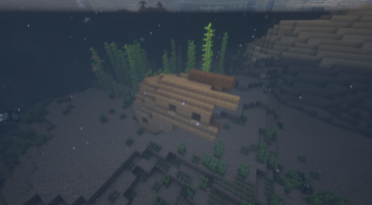
In RSG, speedrunners try looking for the ideal start to a world; usually, that means on an island with buried treasure or a shipwreck nearby. You’d need to start with buried treasure or a shipwreck because they have an abundance of iron, one of the main things needed in a speedrun. Aside from that, the one thing you’ll need a lot of is wood. Don’t ever fall short on it.
There are usually 2 other exceptions. One of them is a village, but only if the village has a blacksmith, which is the best building for loot in a village. Diamonds, gold, iron, armor, bread, obsidian, and iron pickaxes can spawn here. However, blacksmiths do not always spawn in every village. If they don’t, speedrunners usually reset. The other exception is a ruined portal. If there is a ruined portal nearby that has really good loot, speedrunners usually play the seed. Examples include: a fire charge/flint and steel, obsidian, gold armor (enchanted), gold tools (enchanted), golden apple, golden carrots, enchanted golden apple, iron nuggets, or gold blocks. Another ideal thing about ruined portals is that they usually have a lava pool in them, meaning you can go to the nether faster using the lava pool trick.
Getting to the Nether
Now, how would you get into the nether to continue with the run? There are 3 options:
1. First, using obsidian to make your portal. A portal is a 4x5x1 hollow rectangle shape, but you can take out the corner obsidians to make a minimum 10 obsidian structure.
This method is extremely inefficient, unless you spawn near a blacksmith with sufficient obsidian, or you
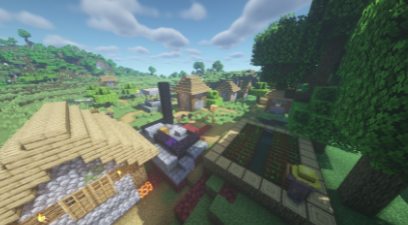
spawn near a ruined portal that already has some obsidian placed there for you (completing the portal using obsidian you may have gotten from the chest). You will also need a fire charge, flint & steel, or lava w/wood to light up the portal. You can get flint using gravel and craft flint and steel using one piece of flint and one piece of iron. Fire charges can come as loot in ruined portals, but they are one-time use. An unenchanted flint and steel have 64 uses.
2. Second, finding a lava pool, and placing water along with lava buckets to form blocks of the obsidian. If lava is placed right next to the water, then it instantly turns to obsidian. So, placing lava in the places the obsidian should be would make a completed portal pretty fast. This is the most common out of the three methods, because finding a lava pool is much easier & pretty fast.
3. Finally, finding a water magma ravine. Using 3 magma blocks in an L-shape, and the hidden source lava, you can create the portal. This method of creating a portal is far more complicated but is the fastest way to make a portal. If you are going for an ocean run (buried treasure/ shipwreck run), then this is probably the type of portal you’ll be making to get to the nether.
Routing a Bastion
Once in the nether, you’re going to immediately look for one of 2 structures— a bastion remnant or nether fortress. Most speedrunners go for the bastion first. The reason being that when you trade in the bastion, you’re likely to gain ender pearls (allowing for easier travel) and fire resistance potions. Here are the steps to finding and successfully routing a bastion:
1. If you press F3 and look on the top left, you’ll see ‘E:_/_’. The “E” is an entity counter, used to see mobs in that general direction. The first underscore is usually around 0-20 entities, usually mobs, but if
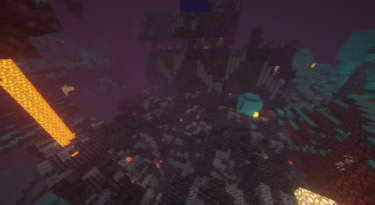
it spikes to 50-90 then that means you have a bastion in that direction.
2. Once you’ve reached the bastion, there are many different ways to play depending on the terrain and bastion type. However, the general strategy is to: mine all the gold in the bastion, trap the piglins in a 1×1 hole, and trade them the gold you mined in the bastion. Remember where the gold blocks in every bastion are to maximize your loot.
3. The bare minimum you need is 12 ender pearls, one fire resistance potion, 10 obsidian, and 48 pieces of string. You’ll need 12 ender pearls to activate all 12 end portal frames in the stronghold, fire resistance to survive the fortress without having to play it safe and slow, 10 obsidian to make another ‘blind’ portal in the nether, and 48 pieces of string to craft the minimum 4 beds to kill the dragon.
Getting to the Fortress
After you’re done with your bastion routing, your next move is to find a fortress.
1. If you press shift + F3, you’ll see a circle, pie chart with hotkeys labelled [_], next to a name. Hotkeys are controls that players use to perform an action. What you first want to do is click your hotkey for the name “tick”, then “level”, then “entities”, and then “block entities”.
2. Here, you want to look for the bright blue color on your chart. If there isn’t a bright blue color on your circle chart, then that means there is no fortress near you, or you need to turn your render distance (player field of view) up.
3. If you see the color, then lower render distance until it’s gone. Then, try moving 16 blocks left, right, forward, backward, or diagonally until you see the blue color on your pie chart again. When you see it, you go in that direction.
Since this blue color indicates a mob spawner, and there are blaze spawners in the fortress, you know there’s a fortress close by. However, this method is not 100% accurate, as there are also magma cube spawners in treasure bastions.
The Blazes
After you’ve reached the fortress, look for the blaze spawner. Once you find it, you can do 2 things.
One, if you have an abundance of string, you can “blaze bed”. Blaze bedding is when you place a bed in
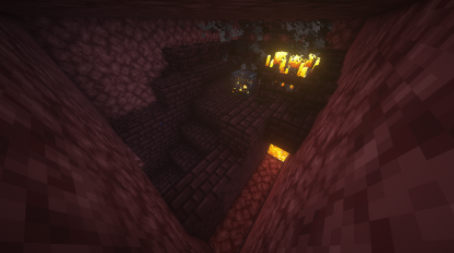
the nether, put a block in between the bed and the spawner so the blaze spawner doesn’t get destroyed, and right-click the bed. You want to make sure you are also covered when doing this. Beds in the nether explode, so when you explode the bed, there is a lot of space for the blazes to spawn because of the explosion. The other option is to mine out the area with a pickaxe to give blazes the room to spawn.
The ideal number of blaze rods to get from killing blazes is 7, as you can turn this into 14 blaze powder (craftable to 14 eyes of ender). You always want to keep more than 12 eyes of ender because there is a one in 5 chance the eye of ender breaks when you throw one to lead you to the stronghold.
Blind Traveling
Once you are done with the nether, you can build your portal near “ideal blind coordinates.” These are coordinates that you can use to build the second nether portal that might put you very near the stronghold. If you press F3 and look on the left-hand side of the screen, you will see X: , Y: and Z: . These are your coordinates in the nether.
Stronghold Navigation
Once the portal is made, you want to craft the eyes of ender. You can throw an eye of ender by holding it and right-clicking on it. The eye will float towards the stronghold, so follow that direction (throwing an eye every 300 blocks). If the eye changes directions then you’ve passed the stronghold. And if the eye ever goes underground, that means you are directly over the stronghold.
Speedrunners sometimes use educated travel, which is when you throw 2 eyes at a certain axis and locate how far the stronghold is based on that. Then, they go back to the nether, where one block in the nether is 8 blocks in the overworld. Here, they make a portal near the coordinates that will put them in the stronghold. Though this requires a lot of practice (and obsidian), it’s much faster to go to the stronghold this way (generally, Strongholds are 1,000-2,500 blocks away).
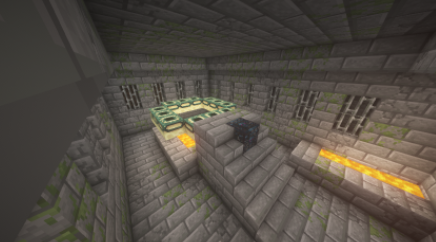
Once inside the stronghold, you’ll need to look for a portal room. Put your eyes of ender in the end portal frame by right-clicking the eyes of ender in your hand, while facing an empty portal frame. Also, there is a 10% chance there is one eye filled for each portal, meaning you could have all 12 eyes filled in for you. However, the chances of this happening are 1 in 1 trillion, so don’t go in a stronghold expecting this to happen!
The End Fight
Once in the end, go to the bedrock portal in the middle, and place a block on a side of the bedrock pillar. Place one blast-resistant block (ex. obsidian, crying obsidian) on top of the block you just placed.
Now, wait until the dragon perches (when the dragon descends to the bedrock fountain), in the direction you put the blocks. You want to be ready for dragon perching, and immediately head for the fountain.
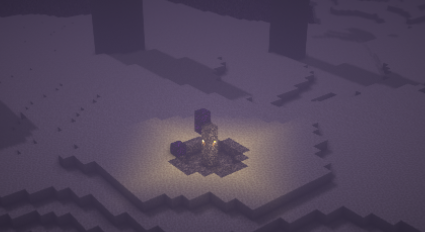
Once you’re at the fountain, try to estimate when the dragon is close enough for you to hit it. You don’t want the dragon to fully descend, because if it does then you can’t place beds. You want to place a bed and right-click on it right when the head hitbox faces the bed(turn on hitboxes using F3 + B). Keep placing beds and ‘exploding’ them until the dragon loses all of its health.
Always be under the bed, and don’t bed on the side that sticks out. You don’t want to go to that side, because you’ll explode if you try to click the bed and you’re there! Once you’ve killed the dragon, a portal will appear at the bedrock fountain. Once you go through there, you can stop the time and you’re fully done with your speedrun!
There are many other tactics used in speedrunning, but these are the very basic ones to get you started. Other tactics, like mapless treasure and divine travel, are also huge timesavers. But, you’ll only use them once you have the basics nailed down. Regardless, good luck on your speedruns!
Your donation will support the student journalists of Dublin High School. Your contribution will allow us to purchase equipment and cover our annual website hosting costs.

Hey there! I am a freshman at DHS. Some things I like to do in my free time are play tennis, play video games, code, play the guitar, play with my Rubik's...



































